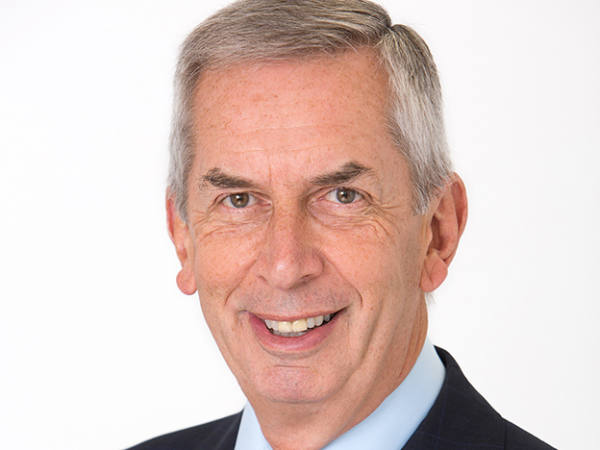Asia has some of the most dynamic economies and arguably the greatest growth potential of all geographic regions. It includes China and India, the countries with the world’s largest populations, where growing affluence is driving many areas such as consumer and financial services. While economic growth is not always reflected in stock markets, the ones in this part of the world are growing and it is home to high-growth and quality companies which good investment teams should be able to find. So it is not an area that long-term growth investors can afford to ignore, as long as they are comfortable with higher risks and exposure to potentially volatile emerging markets.
Stewart Investors Asia Pacific Leaders Sustainability (GB0033874768)
Stewart Investors Asia Pacific Leaders’ managers, David Gait and Sashi Reddy, look to invest in companies that are positioned to benefit from, and contribute to, the sustainable development of the countries in which they operate. They like them to have good quality managements and score well in terms of social usefulness, environmental impact and efficiency, and responsible business practices. They also like companies to have sound finances and financial performance.
The fund typically invests in large and mid-sized companies with a market cap of at least $1bn (£728.66m).
Unlike a number of other broad Asia funds, it is very focused on India, which accounted for 42.4 per cent of its assets at the end of July, in contrast to just 10.5 per cent of MSCI AC Asia Pacific ex Japan Index. And it was very underweight China, in which it had 7.5 per cent of its assets against 33.9 per cent for the index. The fund also has an allocation to Japan, unlike many other Asian funds.
Examples of companies held by the fund include healthcare products provider Hoya (JAP:7741) and Australian biotechnology company CSL (AUS:CSL) which accounted for 5.8 per cent and 5.2 per cent of the fund’s assets at the end of July.
Stewart Investors Asia Pacific Leaders Sustainability’s focus on quality companies means that it typically outperforms in falling markets – it made a positive return in 2018, for example – and lags strongly rising markets, such as in 2019. But it mostly delivers good positive annual returns and over the long term – the timescale you should have if you invest in Asian equities – this approach has resulted in strong total returns.
Fidelity Asia Pacific Opportunities (GB00BQ1SWL90)
Since its launch in 2014, Fidelity Asia Pacific Opportunities has had an outstanding record of outperforming Asian indices such as MSCI AC Asia Pacific ex Japan and the Investment Association (IA) Asia Pacific excluding Japan sector average.
Anthony Srom has managed the fund since launch in 2014 and runs a high-conviction portfolio meaning that each holding can meaningfully contribute to overall fund performance. At the end of July the fund only had 34 holdings. However, Srom aims to mitigate concentration risk by diversifying the fund, for example by trying not to have holdings with high correlations to each other.
Srom selects holdings on the basis of investor sentiment, valuation and research. He is prepared to wait for his holdings to perform well and has an average holding period of more than two years. Although he has a broadly style-neutral approach, he will take contrarian and value positions.
The fund holds a number of stocks that are not included in MSCI AC Asia Pacific ex Japan index, differentiating it from other Asian active and passive funds. At the end of July, these included some of the trust’s largest holdings such as Beijing Oriental Yuhong (CHI:002271), Franco Nevada (CAN: FNV), ASML (NET:ASML) and HDFC Bank (IND:HDFCBANK).
Goldman Sachs India Equity Portfolio (LU0858290173)
Goldman Sachs India Equity’s managers, Hiren Dasani and his team, aim to invest in good businesses of various sizes at a substantial discount to their true worth. They also like companies to have strong or improving fundamentals. The fund’s managers are based in India and Singapore and company meetings are an important part of their investment process.
Goldman Sachs India Equity’s managers “start by evaluating the attractiveness of a company's industry”, explain analysts at FundCalibre. “Highly competitive, capital-intensive industries with low returns may be ignored entirely. They then focus on the valuation of a business. Real cash flows are prioritised over paper profits and Dasani only invests where he sees the opportunity for a substantial gain. The [managers] never say no to a meeting as [they] can always learn something about the industry.”
This investment process has proved to be successful: the fund has consistently outperformed MSCI India index and generated good cumulative total returns. However, it can experience periods of volatility and sharp falls, as demonstrated by its year-to-year returns.
Over half of its assets were in large companies and a quarter in mid-sized ones at the end of July, according to fund research company Morningstar. The fund typically holds 70 to 100 stocks and had 96 at the end of July, which helps to mitigate stock-specific risk.
Examples of these include software company InfoSys (IND:INFY) and ICICI Bank (IND: ICICIBANK) which accounted for 8.2 per cent and 6.4 per cent of the fund’s assets at the end of July.
Fidelity China Special Situations (FCSS)
Fidelity China Special Situations mainly invests in companies listed in China and Hong Kong, and about a quarter of its assets were in mainland listed ‘A-shares’ at the end of July. The trust can also invest up to 15 per cent of its assets in unquoted companies and these accounted for 10 per cent of its assets at the end of July.
The trust’s manager, Dale Nicholls, likes to invest in smaller companies as these tend to be less well-researched so more mispriced. Because smaller companies tend to be higher-risk, to help manage this Nicholls and his team spend a lot of time meeting company managers to understand them and monitor their progress.
Nicholls seeks companies that have good long-term prospects, are cash-generative and managed by strong teams. He likes companies that are likely to benefit from China’s growth and changing economy, are undervalued and can deliver over the long term. So, for example, he invests in companies that provide goods and services to the growing Chinese middle class whose wealth is increasing.
The trust’s largest holdings at the end of July included technology infrastructure and marketing provider Alibaba (HK:9988), and internet and technology company Tencent (HK:700) which both accounted for more than 10 per cent of its assets.
The trust has a good record of outperforming MSCI China index. However, it is a very high-risk option due to its focus on one emerging market economy, exposure to smaller and unquoted companies, and (at time of writing) a substantial level of gearing (debt).
Since April, the trust has charged a basic management fee of 0.9 per cent on the first £1.5bn of its net assets and 0.7 per cent on net assets over £1.5bn. Before this, it charged all assets at 0.9 per cent. It also levies a variation fee of plus or minus 0.2 per cent based on the trust’s NAV per share performance relative to MSCI China index. For its financial year ended 31 March 2021, its basic ongoing charge was 0.97 per cent and the variable fee was 0.12 per cent.
| Cumulative total returns | ||||
|---|---|---|---|---|
| Fund/benchmark | 1yr (%) | 3yr (%) | 5yr (%) | 10yr (%) |
| Fidelity Asia Pacific Opportunities | 25.19 | 59.52 | 102.22 | |
| Stewart Investors Asia Pacific Leaders Sustainability | 29.94 | 39.23 | 72.62 | 195.44 |
| MSCI AC Asia Pacific ex Japan index | 15.47 | 26.24 | 61.52 | 135.55 |
| IA Asia Pacific Excluding Japan sector average | 18.12 | 31.49 | 64.63 | 138.06 |
| GS India Equity Portfolio | 52.61 | 48.44 | 85.06 | 307.20 |
| MSCI India index | 49.00 | 37.58 | 74.43 | 164.76 |
| Fidelity China Special Situations share price | 9.68 | 62.93 | 120.91 | 353.45 |
| MSCI China index | -7.67 | 16.60 | 58.95 | 138.15 |
| Source: FE Analytics as at 31 August 2021 | ||||











